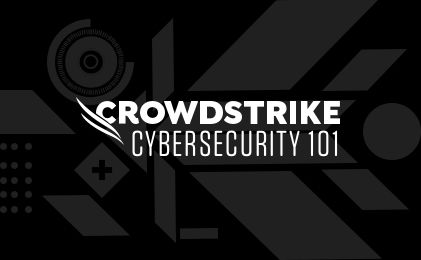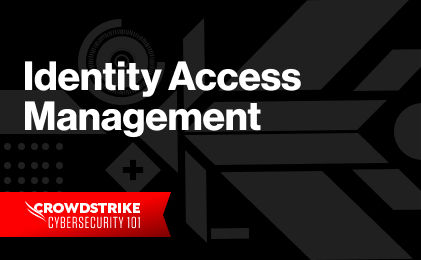What is identity governance and administration?
Managing identities within organizations began as a simple task of onboarding new employees. As the digital landscape grew and employees needed access to more applications, managing entitlements became complex and costly. Traditional methods were inadequate, leading to the need for a more integrated solution. This gave rise to identity governance and administration (IGA).
IGA is a comprehensive framework that combines identity lifecycle management with access governance to streamline processes and enhance security. It ensures that the right individuals have access to the right resources at the right times and for the right reasons. IGA systems are vital for managing user identities, enforcing access policies, and maintaining regulatory compliance. By implementing IGA, organizations can achieve a more secure, efficient, and compliant approach to identity and access management.

The Complete Guide to Building an Identity Protection Strategy
Take the first step toward a resilient identity security posture and download the Complete Guide to Building an Identity Protection Strategy to protect your organization’s digital identity landscape today.
Download NowHow does IGA work?
IGA helps security practitioners gain visibility into identities and access privileges and implement controls to prevent inappropriate or risky access. The policy framework typically includes the following components:
Identity lifecycle management
This component manages the entire lifecycle of user identities—from their creation when an employee joins the organization and through modifications as their roles change to their deprovisioning when the employee leaves. It ensures that identity data is accurate and up-to-date, which helps security teams reduce the risks associated with outdated and orphaned accounts.
Access requests
Enables users to request access to specific resources conveniently through a self-service portal, likened to an internal app store within the IT department. These requests are processed through automated workflows that handle approval and provisioning. This streamlines the access request process, reduces administrative overhead, and ensures that access is granted quickly and accurately based on predefined policies.
Role management
Roles are defined based on job functions, and access is assigned according to these roles. This ensures that users have consistent and secure access to the resources they need without granting excessive permissions. Role management simplifies the assignment of permissions and helps maintain a principle of least privilege.
Access certification
User access rights are reviewed and certified periodically to ensure they remain appropriate. This involves managers and other stakeholders reviewing who has access to what resources and then making any necessary adjustments. Regular access certification helps identify and revoke unnecessary permissions, which is an essential practice for reducing the risk of unauthorized access.
Policy and compliance management
IGA systems enforce adherence to internal policies and external regulations by providing mechanisms for policy definition, enforcement, and auditing. They generate audit trails and reports that demonstrate compliance with regulations, such as GDPR, HIPAA, and SOX. This helps organizations avoid compliance fines and enhance overall governance.
The importance of IGA in modern enterprises
In today's interconnected digital environment, where organizations manage a perfect storm of connected systems holding sensitive digital data, IGA plays a crucial role. With cybersecurity threats growing more sophisticated and with 49% of data breaches attributed to unauthorized access, IGA provides centralized control and visibility over user access.
This capability not only enhances security by preventing unauthorized access but also helps organizations comply with stringent regulations. By managing identities, enforcing access policies, and maintaining audit trails, IGA mitigates risks, reduces breach costs, and safeguards sensitive information, thereby maintaining trust and integrity in operations.
Benefits of implementing IGA
Implementing IGA offers numerous advantages across various facets of enterprise operations, including:
Enhanced security
IGA solutions play a crucial role in enhancing security by ensuring that access rights are appropriate and up-to-date. Automated detection and mitigation of potential security threats coupled with alerts for suspicious activities help reduce the risk of insider threats and external attacks.
Compliance and audit readiness
IGA’s automated compliance reporting and audit trails streamline the process of demonstrating adherence to regulatory requirements. Regular access reviews and certifications ensure that only authorized individuals have access to sensitive information, which helps maintain compliance with industry standards and regulations.
Improved operational efficiency
IGA solutions streamline identity management processes through automated provisioning and deprovisioning of user access. This reduces the time and effort required to manage identities and access rights, allowing IT staff to focus on other priority tasks. Additionally, self-service capabilities empower users to manage their access requests and approvals independently, which further enhances operational efficiency.
Risk management
By identifying and mitigating risks associated with excessive or inappropriate access, IGA solutions help organizations proactively manage security risks. They enable consistent implementation and enforcement of access policies across the enterprise, ensuring that security measures align with business objectives and regulatory requirements.
Cost savings
Automating identity and access management processes with IGA solutions reduces costs associated with manual administration and error correction. Efficient role management and access provisioning minimize the need for redundant access rights and licenses. This optimizes resource allocation and reduces operational expenses.

2024 Threat Hunting Report
In the CrowdStrike 2024 Threat Hunting Report, CrowdStrike unveils the latest tactics of 245+ modern adversaries and shows how these adversaries continue to evolve and emulate legitimate user behavior. Get insights to help stop breaches here.
Download NowChallenges and considerations in IGA implementation
Implementing IGA involves navigating several important considerations to ensure successful deployment into existing operations. From ensuring smooth system integration to fostering user adoption and maintaining scalability and flexibility, addressing these aspects is key to maximizing the benefits of IGA solutions in modern enterprise environments. Here are a few considerations you’ll want to plan for:
Integration with existing systems
Ensuring seamless integration with your existing IT infrastructure and applications is crucial for successful IGA implementation. Before diving in, you’ll need to thoroughly assess your current systems, considering compatibility and interoperability to minimize disruptions and ensure smooth operations.
User adoption
Effective user adoption of IGA requires clear communication, comprehensive training, and ongoing support to help your users understand and embrace the new processes. Get stakeholders from various departments involved so you get good “buy in” and ensure that the IGA solution meets their specific needs and expectations. This collaborative approach not only fosters goodwill but also helps improve the project's success.
Scalability and flexibility
IGA solutions must be scalable to accommodate your growing user base and evolving business requirements. It’s important that your IGA solution provides flexibility in configuring policies, workflows, and roles so it’s easy to adapt to your changing organizational dynamics and regulatory landscapes.
Conclusion
In our interconnected landscape of digital identities and access management, IGA is an important component of modern identity and access management strategies. By adopting IGA solutions, organizations not only fortify security, ensure regulatory compliance, and optimize operational efficiencies but also proactively manage evolving risks in the dynamic threat landscape. As the threat landscape continues to evolve, investing in IGA is imperative for safeguarding access to critical resources and maintaining robust identity management practices.
Learn More
Explore CrowdStrike identity security solutions
Identity Threat Detection and Response: Detect breaches in real time with proactive threat mitigation.
CrowdStrike Falcon® Complete Next-Gen MDR: Fully managed identity protection with 24/7 monitoring.
Zero Trust: Enforce Zero Trust principles across all environments.
Secure your digital assets today with Falcon Identity Protection and prevent identity-driven breaches before they happen.







